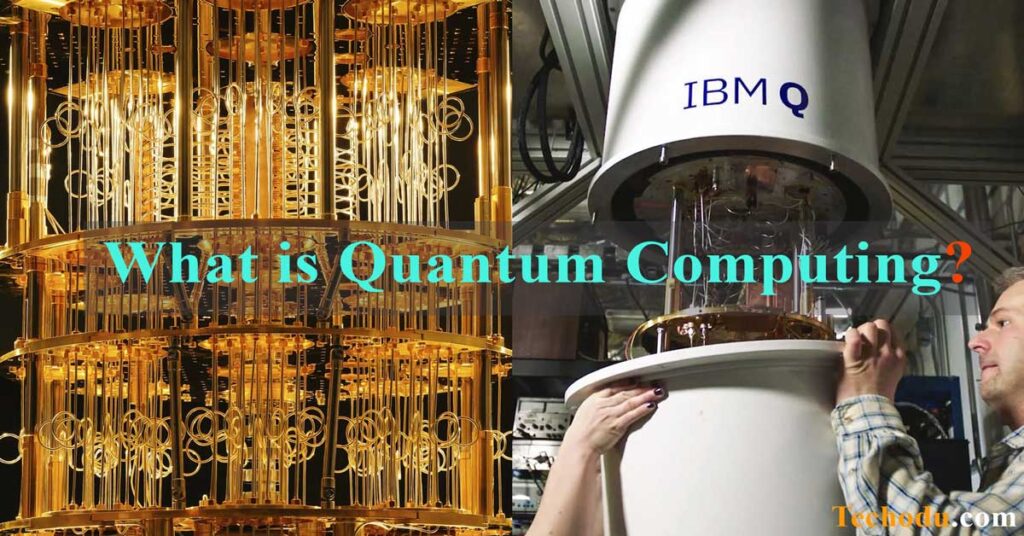Quantum computing is a rapidly emerging technology that uses the laws of quantum mechanics to solve problems too complex for classical computers.
Today, IBM Quantum makes true quantum hardware for use by thousands of developers, a tool that scientists only started to imagine 30 years ago. Our engineers regularly deliver more powerful superconducting quantum processors that enable the quantum computing speed and power needed to change the world.
These machines are very dissimilar from the traditional computers that have been around for more than half a century. This is a manual on this undisciplined technology.
Why do we need quantum computers?
For some problems, supercomputers aren’t that great.
When scientists and engineers run into problems, they turn to supercomputers. These are very big traditional computers, often with thousands of traditional CPU and GPU cores. However, even with supercomputers, some problems are very difficult to solve.
If supercomputers are powerless, it’s probably because this large classical machine is being asked to solve highly complex problems. What makes traditional computers powerless is usually complexity
A complex problem is one in which many variables interact in complex ways. Modeling the behavior of individual atoms in a molecule is a complex problem because all the different electrons interact. Picking the ideal route for hundreds of tankers in a global shipping network is also a complex task.
Why quantum computers are faster
Let’s take a look at an example of how a quantum computing can successfully deal with a situation where a classical computer can’t do anything:
Supercomputers may be good at tackling such daunting tasks as classifying large databases of protein sequences. But it’s hard to see the subtle patterns in the data that determine the behavior of these proteins.
How complexity beats supercomputers
Proteins are made up of long strings of amino acids that, when folded into complex shapes, become useful biological machines. Figuring out how proteins fold is a problem of great importance to both biology and medicine.
Read Also: What is Cloud Computing?
A classical supercomputer might try to brute force the folding of a protein, using numerous processors to examine every possible way chemical chains could bend, and then come up with an answer. But as protein sequences get longer and more complex, supercomputers stop functioning. A chain of 100 amino acids could theoretically be folded in any of trillions of ways. No computer has enough working memory to handle all possible combinations of a single fold except quantum computing.
Quantum computers are built for complexity
Quantum algorithms take a new approach to solving these complex problems by creating multidimensional spaces in which patterns emerge that link individual data points. Classical computers cannot create these computational spaces, so they cannot find these patterns. And for proteins, there are early quantum algorithms that can find folding patterns in new and more efficient ways without the laborious checking routines of classical computers. As quantum hardware scales and these algorithms advance, they can solve protein folding problems too complex for any supercomputer.
How does a quantum computer work?
Quantum computers are elegant machines that are smaller and require less energy than supercomputers. The IBM Quantum processor is a single chip, not much larger than the chip in a laptop. The quantum hardware system is about the size of a car and consists primarily of cooling systems designed to keep superconducting processors at ultra-low operating temperatures.
Classical processors use bits to perform operations. Quantum computers, on the other hand, use quantum bits (CUE bits) to run multidimensional quantum algorithms.
Superfluid
Your desktop computer may use a fan to cool it to a suitable operating temperature. And our quantum processors require very low temperatures – about a hundredth of a degree above absolute zero. To achieve this, we use ultracold superfluids to create superconductors.
Superconductor
At these ultra-low temperatures, some of the materials in our processors exhibit another important quantum mechanical effect: electrons can pass through these materials without resistance. This makes them “superconductors”. When electrons pass through a superconductor, they pair up, forming “Cooper pairs.” These pairs can carry charge across a potential barrier or insulator through a process called “quantum tunneling.” 2 superconductors are placed on either side of an insulator to form a Josephson junction.
Control
Our quantum computer uses Josephson junctions as superconducting qubits. By firing microwave photons at these qubits, we can control their behavior and have them save, change and read out individual units of quantum information.
Overlay
Qubits are not very useful by themselves. But it can perform an important trick: put the quantum information it holds into a superposition state, which represents a combination of all possible configurations of qubits. Superimposed groups of qubits can create complex multi-dimensional computational spaces. In these spaces, complex problems can be represented in new ways.
Entanglement
Entanglement is a quantum mechanical effect that correlates the behavior of two separate things. When two qubits are entangled, changes in one of the qubits directly affect the other. Quantum algorithms exploit these relationships to find solutions to complex problems.
